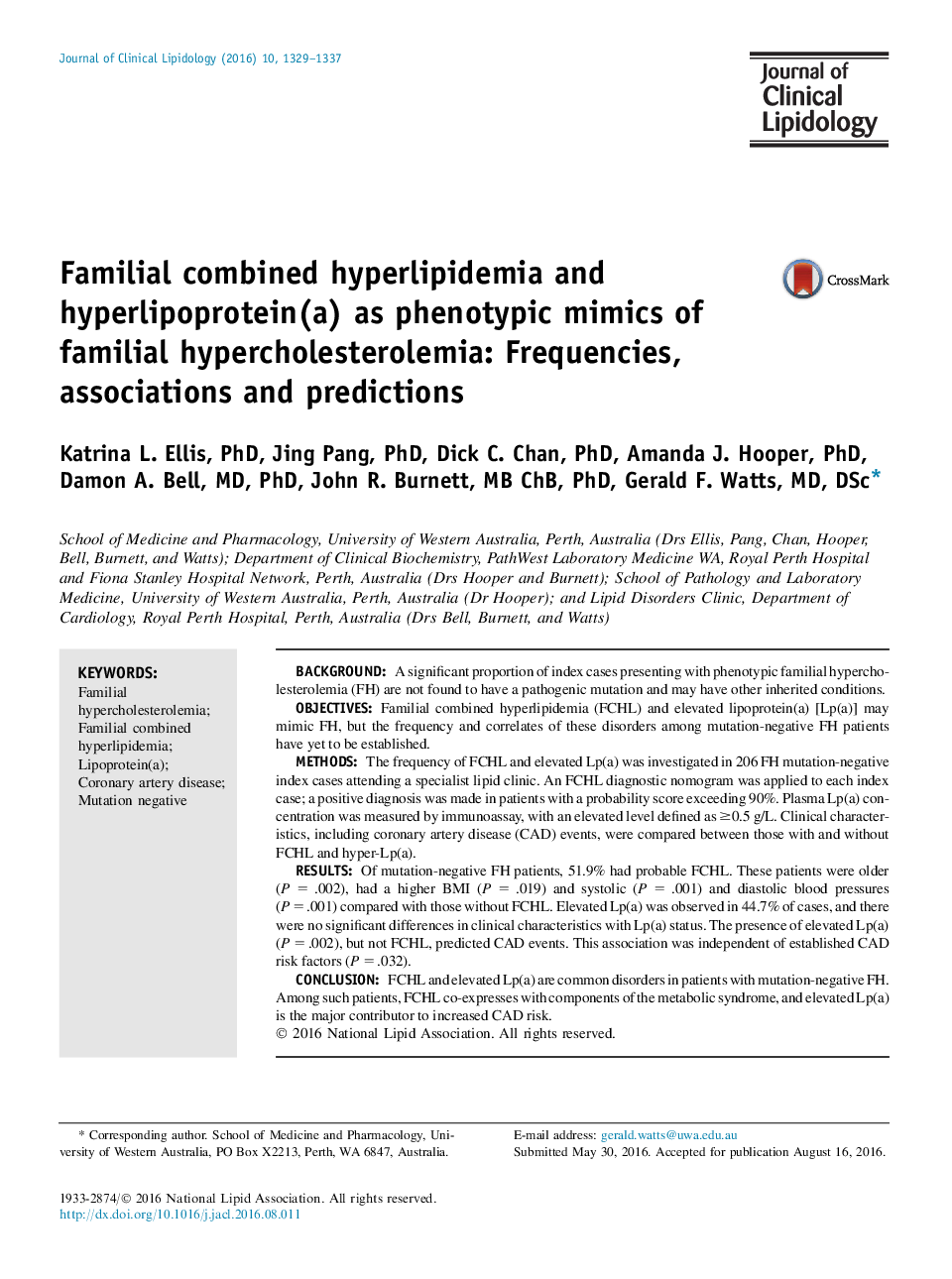| کد مقاله | کد نشریه | سال انتشار | مقاله انگلیسی | نسخه تمام متن |
|---|---|---|---|---|
| 5985110 | 1578169 | 2016 | 12 صفحه PDF | دانلود رایگان |

- FCHL and elevated Lp(a) are inherited lipid disorders that may mimic FH.
- FCHL and elevated Lp(a) are commonly encountered in mutation-negative FH patients.
- FCHL co-expresses with components of the metabolic syndrome.
- In mutation-negative FH, elevated Lp(a) is a contributor to increased coronary artery disease risk.
BackgroundA significant proportion of index cases presenting with phenotypic familial hypercholesterolemia (FH) are not found to have a pathogenic mutation and may have other inherited conditions.ObjectivesFamilial combined hyperlipidemia (FCHL) and elevated lipoprotein(a) [Lp(a)] may mimic FH, but the frequency and correlates of these disorders among mutation-negative FH patients have yet to be established.MethodsThe frequency of FCHL and elevated Lp(a) was investigated in 206 FH mutation-negative index cases attending a specialist lipid clinic. An FCHL diagnostic nomogram was applied to each index case; a positive diagnosis was made in patients with a probability score exceeding 90%. Plasma Lp(a) concentration was measured by immunoassay, with an elevated level defined as â¥0.5 g/L. Clinical characteristics, including coronary artery disease (CAD) events, were compared between those with and without FCHL and hyper-Lp(a).ResultsOf mutation-negative FH patients, 51.9% had probable FCHL. These patients were older (P = .002), had a higher BMI (P = .019) and systolic (P = .001) and diastolic blood pressures (P = .001) compared with those without FCHL. Elevated Lp(a) was observed in 44.7% of cases, and there were no significant differences in clinical characteristics with Lp(a) status. The presence of elevated Lp(a) (P = .002), but not FCHL, predicted CAD events. This association was independent of established CAD risk factors (P = .032).ConclusionFCHL and elevated Lp(a) are common disorders in patients with mutation-negative FH. Among such patients, FCHL co-expresses with components of the metabolic syndrome, and elevated Lp(a) is the major contributor to increased CAD risk.
Journal: Journal of Clinical Lipidology - Volume 10, Issue 6, NovemberâDecember 2016, Pages 1329-1337.e3